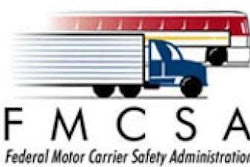Federal Highway Administrator Victor Mendez joined state and local officials Monday, Aug. 9, as a huge machine, known as a “road header,” began grinding into the Berkeley Hills, Calif., beginning the Caldecott tunnel’s fourth bore. This phase of the project is funded by the American Recovery and Reinvestment Act and will make room for two additional lanes on the heavily traveled State Route 24 near Oakland.
“The new tunnel will reduce congestion for those living in the East Bay and put people to work,” says U.S. Transportation Secretary Ray LaHood. “This is what the Recovery Act is all about.”
The $420 million project relies on $197.5 million from the Recovery Act, making it the nation’s second-largest investment of Recovery Act highway funds. Of the more than 12,000 highway projects, it is the largest tunnel excavation funded by the Recovery Act. The fourth bore will be the first on the route since 1964.
“This ambitious fourth tunnel allows the state to address long-standing challenges,” Mendez says. “Residents and commuters will spend less time driving, and the project is creating hundreds of good-paying jobs for area workers.”
State Route 24’s existing three tunnels, which give drivers a total of six lanes, are inadequate for the heavy volume of Bay Area traffic each day; the route serves an estimated 160,000 drivers daily. When completed in 2013, the new 3,389-foot-long tunnel will have 12-foot lanes, shoulders and emergency walkways.
The road header will tunnel west toward Oakland from Orinda to be met in the months ahead by two smaller road headers boring eastward. Work crews will advance from both sides of the new tunnel, excavating and stabilizing small segments as they go, moving one to two yards a day.
Located less than a half mile from the Hayward fault, the tunnel will be built to withstand an earthquake (as are the existing tunnels) and will include numerous safety features, including seven emergency escape passages to the adjacent tunnel.
Of the more than $26.6 billion in ARRA highway funds available nationwide, California received nearly $2.6 billion for highways – and more than $4 billion in ARRA funding for all transportation projects, which supplements billions more in local and state spending. As of July 30, the state had funded 946 projects, with 455 projects under way and 122 completed.
According to the U.S. Department of Transportation, Recovery Act money has employed tens of thousands of people in the transportation sector nationwide and improved more than 30,000 miles of highway.













